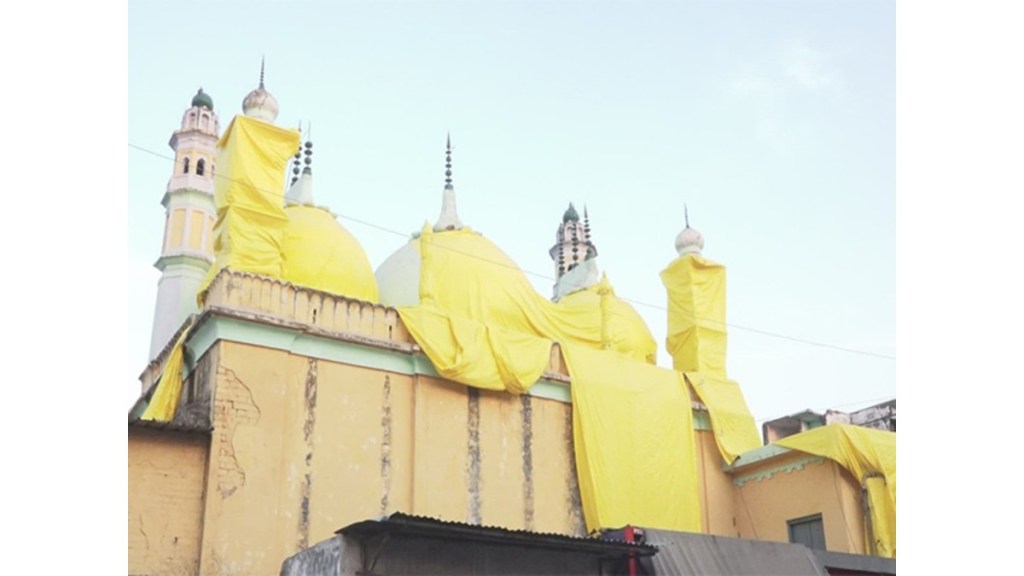Shahjahanpur is getting ready for the traditional ‘Laat Saheb’ Holi procession with heightened security measures, as the festival of colors coincides with Friday prayers this year. Mosques along the procession route have been covered with tarpaulins to prevent them from being stained by colors, and barricades have been installed to ensure safety. The local administration has also deployed a security setup, including CCTV cameras along the route.
The historic ‘Laat Saheb’ procession, which dates back to the 18th century, involves revellers throwing footwear at a man dressed as ‘Laat Saheb’—a British Lord—seated on a bullock cart. The procession begins with this symbolic act and continues with a unique series of events.
Superintendent of Police Rajesh S stated that there are 18 Holi processions in the city, including two major ‘Laat Saheb’ processions. To maintain order, the larger procession has been divided into three zones and eight sectors. Around 100 magistrates will be overseeing the event, and police have taken preventive action against 2,423 individuals to curb potential troublemakers.
The security force includes 10 police circle officers, 250 sub-inspectors, 1,500 police personnel, and two companies of the Provincial Armed Constabulary (PAC). Authorities have issued a strong warning, urging the public to celebrate peacefully and ensuring that any miscreants will be closely monitored.
Municipal Commissioner Vipin Kumar Mishra highlighted the extensive security infrastructure, with around 350 CCTV and still cameras placed along the procession route. Barricades have been positioned near mosques and electrical transformers for added safety. Additionally, two tractor trolleys will follow the procession to collect discarded shoes and other debris, and a sky lift will be part of the event for aerial monitoring.
Security tightens in Sambhal
The Sambhal police in Uttar Pradesh will cover 10 mosques, including the historic Jama Masjid, with plastic sheets and tarpaulins along the route of a Holi procession on March 14. This measure aims to ensure the smooth conduct of both Holi celebrations and Friday prayers during Ramadan.
Tensions have been rising in Sambhal since November, following a court-ordered survey of Jama Masjid over claims that it was built on the remains of a Hindu temple. Protests against the survey escalated into violent clashes, resulting in five deaths and more than 20 police officers injured.
All about Laatsaheb Holi
Historian Dr. Vikas Khurana traced the origins of the ‘Laat Saheb’ tradition back to 1728 when Nawab Abdullah Khan returned to Shahjahanpur after a trip to Farrukhabad. Over time, the procession has evolved, with camel carts first being introduced in 1930. In the 1990s, a petition to stop the procession was filed in the High Court, but the court upheld the tradition.
Harnaam Katihar, a member of the organizing committee, explained that the procession begins at Kuncha Lala and proceeds to the Phoolmati Temple, where the ‘Laat Saheb’ offers prayers. The procession then continues to the police station, where the ‘Laat Saheb’ humorously questions the police about crimes committed over the past year. As tradition dictates, the police offer a bottle of liquor and cash as a bribe before the procession continues its seven-kilometer route, with participants hitting the ‘Laat Saheb’ with shoes along the way.
(With PTI Inputs)


